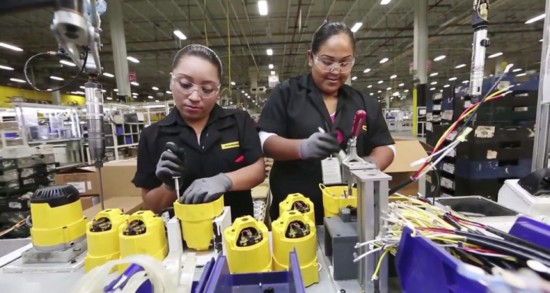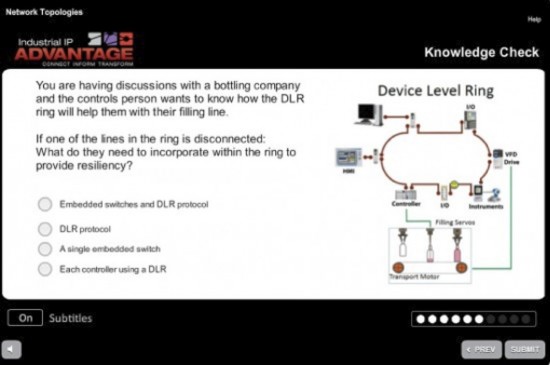Digitization is rapidly transforming the manufacturing industry. Manufacturers are now tracking supplies and resources, viewing work flow status, measuring production yield, and predicting downtime through extensive data collection and analytics in real time.
Companies that digitize their operation will leave behind those relying on legacy systems. In fact, nearly 4 of the top 10 incumbents in the Manufacturing industry are considered vulnerable to digital disruption within the next three years.

Unfortunately, despite the advantages brought forth by digitization, less than 20 percent of U.S. manufacturers have implemented a connected enterprise, according to Rockwell Automation.
The times they are a-changin’
I think back to the time when control systems and programmable logic controller systems were all proprietary and leveraged closed protocols. As technology progressed, IP and Ethernet made their way into the manufacturing floor in small ways, displacing these traditional vendor protocols, in niche applications.
The folks in the IT department, aka the carpet floor, have the experience with large scale IP network deployment. However, they have focused on corporate communications including web access, email, and IP phones but have had very little involvement with the actual day-to-day operations at the plant floor level.
The folks on the Operations side, meanwhile, have the experience with plant floor operations, but they have focused on machine-to-machine communications within the manufacturing floor, using proprietary, vendor-based protocols.
This skills gap between the IT and OT professionals has left the management of the first switches and routers to the shop floor workers – which has led to security holes and inconsistent policy enforcement.
Today, digitization, fueled by the power of IP, allows the entire manufacturing process and entire supply chain to be completely automated, secured, and managed as a global entity. This drives greater outcomes such as improved efficiencies, reduced downtime, greater resource utilization, and increased returns on investment over a shorter time horizon.
The problem is that technology is evolving much faster than the available skill sets.
IP based devices, sensors, switches, and routers span the entire manufacturing process and can no longer be loosely managed. The control engineers on the shop floor must acquire the new skills as it is not scalable to rely on their IT counterparts to come in from time to time to check on things.
Investing in the Workforce
Manufacturing leaders need to invest in training their shop floor workers and manufacturing process experts. These workers need to be skilled in using new technologies, because the production network and enterprise network are coming together.

We recognize the skills gap and have teamed up with leaders in the manufacturing automation space to simulate real-world experience via hands-on lab exercises that focus on managing and operating converged plants, and troubleshooting problems.
We’ve invested in:
– A full slate of basic networking skills and IT/OT education offerings
– The CCNA Industrial, a Cisco Certification focused on preparing individuals to manage and operate the converged plant network
– E-learning courses from Industrial IP Advantage, an industry consortium led by Cisco, Rockwell Automation, and Panduit

Adaptation is not a choice – it’s an imperative for survival and success. Manufacturers must fully embrace digitization and empower their workers with the necessary skills.
Have you used training to close the knowledge gap in your company? Share your experience in the comments section below.

Not only from 4 to 10, which is almost in the manufacturing sector is considered to be vulnerable to disruption digital within three years from now.
http://gpmi.com.vn/